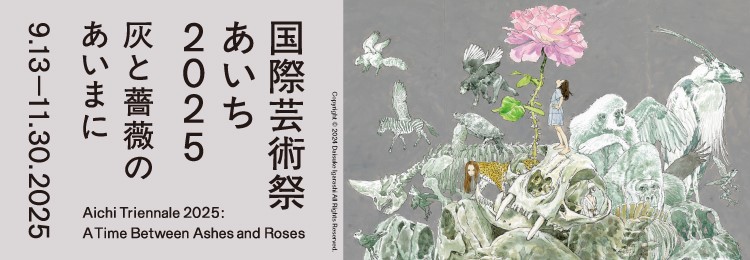アートと気候危機のいま vol.6 コラム「訪問者の移動と、二酸化炭素排出量の現実」
NPO法人アーツイニシアティヴトウキョウ [AIT/エイト]設立メンバーのひとりであり、TOTAL ARTS STUDIES(TAS) プログラム・ディレクター、ロジャー・マクドナルドによる、気候危機とアートについての連載。ニュースやインタビューで海外の動向の「いま」をわかりやすく紹介する連載の第6回は、ロジャーによるミニコラムを紹介。世界のアート界でもっともCO2を排出しているものと、その対策について取り上げる。 *The English version is below the Japanese.

アート来場者と二酸化炭素排出量の現実。
芸術や文化分野から気候や自然、気候正義に対し行動を起こすイギリスの非営利団体・ジュリーズ・バイシクル(Julie's Bicycle)は2021年4月、世界のアートセクターの温室効果ガス排出量推計の画期的な報告書を発表した(*1)。報告書では、2019年のデータを算出し、世界のアートセクターのCO2総排出量は年間7000万トンに達すると推定した。これはシンガポールの(一国としての)年間排出量にほぼ匹敵する(*2)。
報告書によれば、CO2排出量の11%は公立美術館から、7%はアーティストのスタジオから、5%はコマーシャルアートギャラリーから排出されており、これらには美術品の輸送、関係者の出張費ほかすべてのエネルギー使用量が含まれている。とりわけ目を見張るのは、全体排出量のうち、74%が訪問者の移動によるという報告だ。これは、世界のアート産業のCO2排出量の大部分を占めるのが、国内外からの美術館やアートフェア、ギャラリー、イベントへの訪問者の移動によるものという現実である。
このことは明らかに、アートセクターの温室効果ガス排出量削減の未来にとって重要な意味を持つだろう。なぜなら美術館やアートイベントは、多くの人々が現場に関わることで運営され、その体制のもと、もたらされる収入に依存しているからだ。そして、展覧会の目的は、多くの人に足を運んでもらい、体験してもらうために展示する、という考えに基づいている。しかし、このようなアート界の公共性を重視する側面こそが、最大のCO2排出の原因となってしまっていると、このデータは示している。
ギャラリー気候連合(Gallery Climate Coalition[GCC])や国際美術館会議(CIMAM)、Bizot、ジュリーズ・バイシクルのような団体では、アート界において二酸化炭素排出量を削減する方法やアイディアについて、あらゆるリサーチを行い、わかりやすく簡潔な情報を提供している。エネルギー供給源を持続可能なものに変えたり、航空貨物やフライトによる長距離移動を減らしたり、梱包材を再利用したり、エコロジーへの責任を意識したりと、比較的すぐにできることはたくさんある。しかし、訪問者の移動は複雑な問題であり、美術館やギャラリー側がコントロールできる範囲を超えていることが多い。
しかし、それでも工夫できることはあるかもしれない。例えば:
- 主催者側(美術館やギャラリー、アートフェア)が、長距離移動に頼らない、地域や地方を巡回する展示モデルを開発、提案する。
- 徒歩、自転車、公共交通機関など、低炭素の交通手段を奨励する。低排出量の交通手段で移動する来場者に対して、展覧会入場料の割引または無料クーポンなどを提供する。
- より良い公共交通機関やサイクリング・インフラなどへの地域投資をロビー活動で支援する。
- 博物館や美術館に電気自動車充電ポイントを設置する。
もちろん、美術館の立地や年間予算などによっては、このような行動すら難しいかもしれない。経済、ビジネス、エコロジーの現実的なバランスは、施設ごとに異なるだろうし、最終的には、各組織が気候危機との関わり方を深く考えることになるだろう。
産業、ビジネス、そして日常生活が気候変動と生物多様性の危機の影響を受けるにつれ、行動を起こす組織と起こさない組織には転機が訪れるだろう。アート分野では、行動を起こさないことを選択した団体は、市場の取り組み、財団や公的な助成金の可能性、作品の貸し出し、メディアへの露出からますます孤立することになるかもしれない。
気候危機とアートに的を絞った資金援助の一例が、2021年に米国で開始された。「ヘレン・フランケンサーラー気候イニシアチブ」は、エネルギーと気候に関する助成金プログラムで、この種の取り組みとしては世界初である。このイニシアチブは、ビジュアル・アートセクターにおけるエネルギー効率とクリーン・エネルギー発電プロジェクトに資金を提供し、アメリカ国内の大小の美術館に、脱炭素化を推進する取り組みへの助成金を授与している。具体的には、 施設での実質的なエネルギー効率化を実現するための技術助成や、気候とエネルギー緩和のリサーチに関する助成などがある。
またアートフェアの間では、新たな気候変動対策ネットワークが形成されつつあり、これが今後の参加ガイドラインの制定や(参加団体に対する、気候変動対策への)勧告につながる可能性もある。これは、特定のフェアへの参加を希望するギャラリーが、環境への責任を証明する必要があることを意味する。現時点では、こうしたレベルの監視につながるガイドラインは制定されていないが、このような気候変動基準が効果的に開始されるようになるのは時間の問題だと思われる。
同様に、アーティストたちが、ギャラリー、美術館、ビエンナーレに対して、気候危機に対応するように圧力をかけることも起きるだろう。アーティストは、この議論においてユニークな発言力を持ち、社会変革の主体として大きな力を秘めている。ギャラリー気候連合は、アーティストたちに気候変動に関する行動をインタビューし、その情報をブログで公開している組織のひとつだ。インタビューを受けたアーティストの ひとりでベルリンを拠点に活動するティノ・セーガルは、長年にわたりローインパクト・トラベル(より環境負荷の少ない移動方法)を実践している。
私たちは、アートスペース、美術館を訪問する人々の体験、そして旅行や移動のあり方についてどう考えるか、いま、その転換期に差し掛かっている。
私が所属するAITでは、こうした世界の動きと呼応し、深く学ぶための講座「TAS」を開講している。この記事を読んで興味を持った方は、ぜひチェックしてみてほしい。

